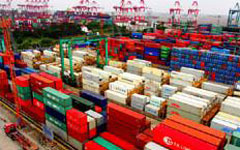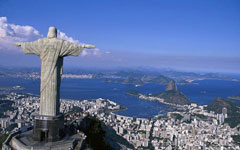Q1 export figures 'to be volatile'
By Li Jiabao (China Daily) Updated: 2014-02-25 07:29He denied that the export figure was inflated by capital inflows disguised as trade payments.
Exports to the European Union, China's largest trade partner, rose 18.8 percent in January. Shipments to the United States increased 10.7 percent.
Exports to Japan went up 16.1 percent, despite strained bilateral ties.
"The January figures for trade with Japan, as well as China's investment in Japan, shouldn't be over-analyzed," Shen said.
|
 |

|
"Japanese investment in China strongly supported bilateral trade figures. But the number and value of Japanese investment projects in China declined last year and also in January.
"Given this, the bilateral trade outlook is not optimistic," Shen added.
In 2013, China's overall ODI in Japan dropped 23.5 percent, and Japan's investment in China decreased 4.28 percent, according to the ministry.
Liu Xuezhi, a researcher at the Bank of Communications Ltd in Shanghai, said in a note that the weeklong Lunar New Year festival, which began on Jan 31 this year - about two weeks earlier than last year - prompted exporters to front-load business ahead of the holiday. That increased the January export data.
February exports will show steady growth because the US and EU economies maintained recovery momentum and that sustained robust demand for Chinese exports, the note said.
Import growth in February will slow, Liu said, because stockpiles of energy products and raw materials stood at high levels following massive imports in January. Meanwhile, manufacturing activity remained sluggish.
Concern about heavy smog across the country has also curtailed use of petrochemical and energy products in the world's second-largest economy.
He Keng, former vice-chairman of the Financial and Economic Committee of the National People's Congress, said on Friday that China's foreign trade this year will be bigger than last year because of a "satisfactory" recovery in developed economies and slower appreciation of the yuan.
Don't miss:
|
 |
 |
| Top 10 Chinese youth's favorite seaside resorts |
- NHTSA says finds no 'defect trend' in Tesla Model S sedans
- WTO rare earth ruling is unfair
- Amway says 2014 China sales may grow 8%
- President Xi in Europe: Forging deals, boosting business
- CNOOC releases 2013 sustainability report
- Local production by Chery Jaguar Land Rover this year
- Car lovers test their need for speed in BMW Mission 3
- China stocks close mixed Monday

















